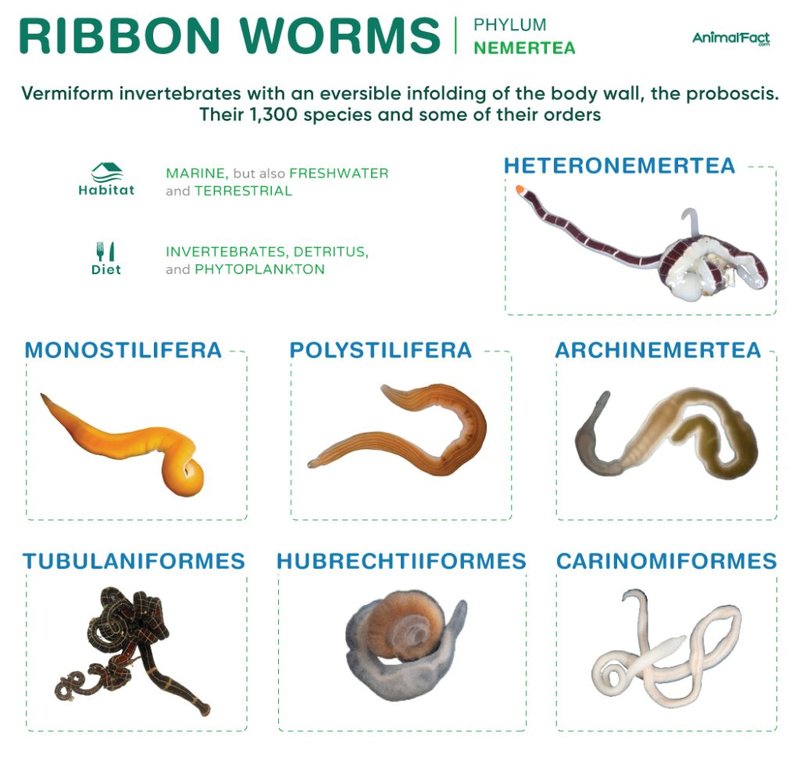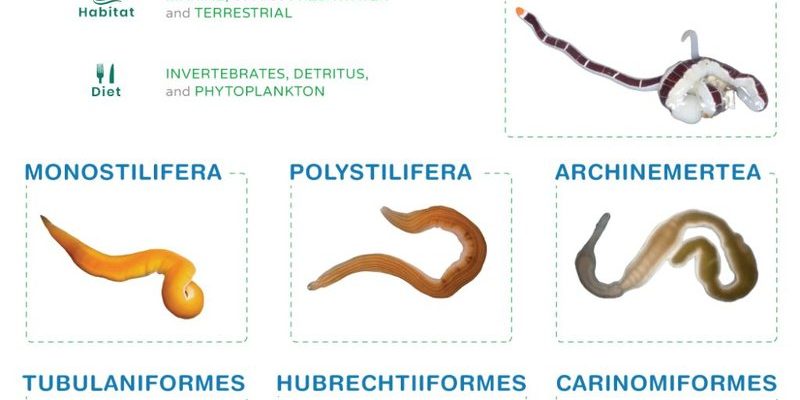
Imagine stringing a bunch of soft, colorful rubber bands together and letting them float in the water. That’s a bit like what you’d find when you dive into the realm of ribbon worms. They can stretch to impressive lengths and come in various colors, making them intriguing yet a bit mysterious. So, what exactly are ribbon worms? Let’s take a closer look at these fascinating creatures.
What Are Nemerteans?
Nemerteans, or ribbon worms, are a diverse group of invertebrates that belong to the phylum **Nemertea**. They can be found in various aquatic environments, ranging from shallow coastal waters to the deep sea. What sets them apart from other invertebrates is their unique body structure and some surprisingly sophisticated features.
These worms can vary in size; some are just a few centimeters long, while others, like the giant ribbon worm (*Lineus longissimus*), can reach lengths of over 30 meters (about 100 feet)! Their bodies are soft and flexible, allowing them to move fluidly through their habitats. Most ribbon worms have a distinct **coloration**, with shades of pink, orange, or green, which can help them blend in with their surroundings.
You might wonder why they matter. Well, they play crucial roles in ecosystems, especially in marine environments. They serve as both predators and prey, forming an important part of the food web.
How Do Ribbon Worms Move?
Honestly, one of the most fascinating things about ribbon worms is their method of movement. Unlike fish that swim or crabs that scuttle, ribbon worms use a unique combination of muscular contractions and cilia—tiny hair-like structures—to glide through the water or along substrates.
Think of them as a living ribbon that undulates gracefully. When a ribbon worm decides it’s time to move, it contracts its body muscles, allowing it to slide along the ocean floor or swim through the water with a smooth, flowing motion. This flexibility is key to escaping predators and exploring their environment.
Another unique feature is their **proboscis**, a specialized feeding organ that can shoot out quickly to snag prey. It’s like having a hidden fishing line; the worm can extend this organ to catch small fish, crustaceans, or even other worms.
Feeding Habits: What Do Ribbon Worms Eat?
So, what’s on the menu for ribbon worms? These creatures are primarily carnivorous. They feed on small marine animals, including crustaceans, fish larvae, and even other worms. Their method of hunting is as fascinating as their movement.
When a ribbon worm encounters prey, it can extend its proboscis to capture it. This organ can inject **digestive enzymes** into the prey, breaking them down externally before the worm absorbs the nutrients. It’s like having a built-in blender that turns food into a nutrient-rich smoothie!
Some species even employ a more stealthy approach by lying in wait for unsuspecting prey to come close. This fascinating method helps them thrive in various habitats, from sandy shores to rocky bottoms.
Habitat: Where Do Ribbon Worms Live?
Ribbon worms are quite adaptable and can be found in a range of habitats. They often prefer coastal areas, where they can burrow into the sand or hide among the rocks. However, some species are also found in deeper waters, showcasing their versatility.
In shallow waters, you might find them in tidal pools or marshy areas, where they can thrive among the rich biodiversity. These environments provide ample food sources and shelter from predators.
In deeper waters, ribbon worms can inhabit sediment-rich areas or rocky substrates, where they continue their roles as both predator and prey. This adaptability not only allows them to survive but also enables them to play essential roles in their ecosystems.
Reproduction: How Do Ribbon Worms Multiply?
When it comes to reproduction, ribbon worms have a few tricks up their sleeves. Most species are **hermaphroditic**, meaning they have both male and female reproductive organs. This increased flexibility makes it easier for them to find a partner since they don’t have to go looking for opposite sexes.
During the breeding season, ribbon worms often engage in a process called **ephyra** release, where they release their eggs and sperm into the water. After fertilization, the larvae develop in the water before settling down and transforming into adult worms. Some species can also reproduce asexually through fragmentation, where a part of the worm can grow into a new individual. It’s like cutting a piece of bread and watching each slice become a loaf—all you need is a little time!
Ribbon worms might not be the first creatures that come to mind when you think of marine life, but they are truly captivating. Their unique adaptations, striking appearances, and crucial roles in the ecosystem make them worth knowing. Whether they’re swimming gracefully through the water or hunting for their next meal, ribbon worms showcase the incredible diversity of life beneath the sea.
So next time you’re at the beach or exploring tidal pools, you might just see these ribbon-like creatures gliding or coiling around. Who knows? You could be witnessing a small piece of the ocean’s hidden wonders.

